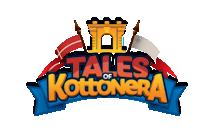


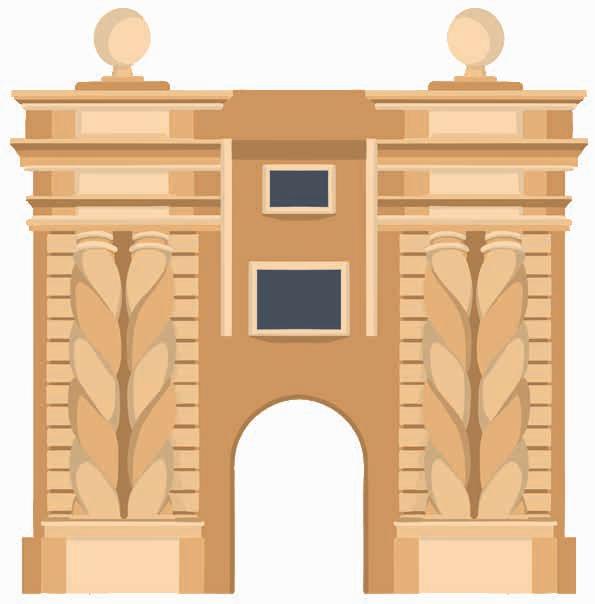
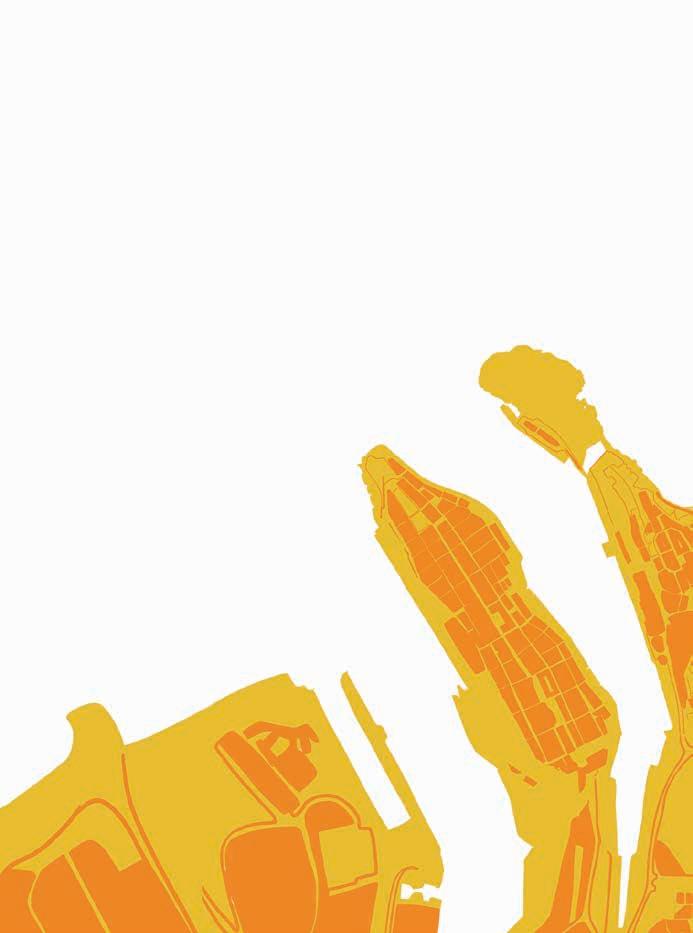






Stroll into this pretty seaside village’s past to uncover the hidden gems of Kalkara. This adventurous heritage trail takes you on a journey through 21 exciting stops past sentinel forts, forgotten cemeteries, Hollywood film sets and repurposed villas. Follow the Tales of Kottonera characters as they spill the beans on Kalkara’s characters, crack fun challenges, and scan QR codes to uncover why admirals, knights and injured sailors called this fishing community home.
Kalkara’s fiery history is full of surprises. You can cool off at Rinella Bay. Let’s go!
DURATION: 2 HOURS
STARTING POINT: FORT RINELLA
ENDING POINT: HERITAGE MALTA HEAD OFFICE
CONCEPT & COORDINATION
Godwin Vella
EDITING
Fiona Vella
AUTHORSHIP
George Agius & Warren Bugeja
DESIGN & LAYOUT
Cherise Micallef
TECHNICAL SUPPORT
Kimberly Azzopardi, Kevin Farrugia & Chilion Mangion
ISBN 978-9918-627-21-9
PRODUCTION
Heritage Malta Publishing
PRINTING
Bonnici Press Ltd
PRODUCED BY HERITAGE MALTA PUBLISHING
© 2025 Heritage Malta. All rights reserved in all countries. No part of this book may be reproduced or utilised in any form or by any means without the prior written permission of the publisher and respective authors.
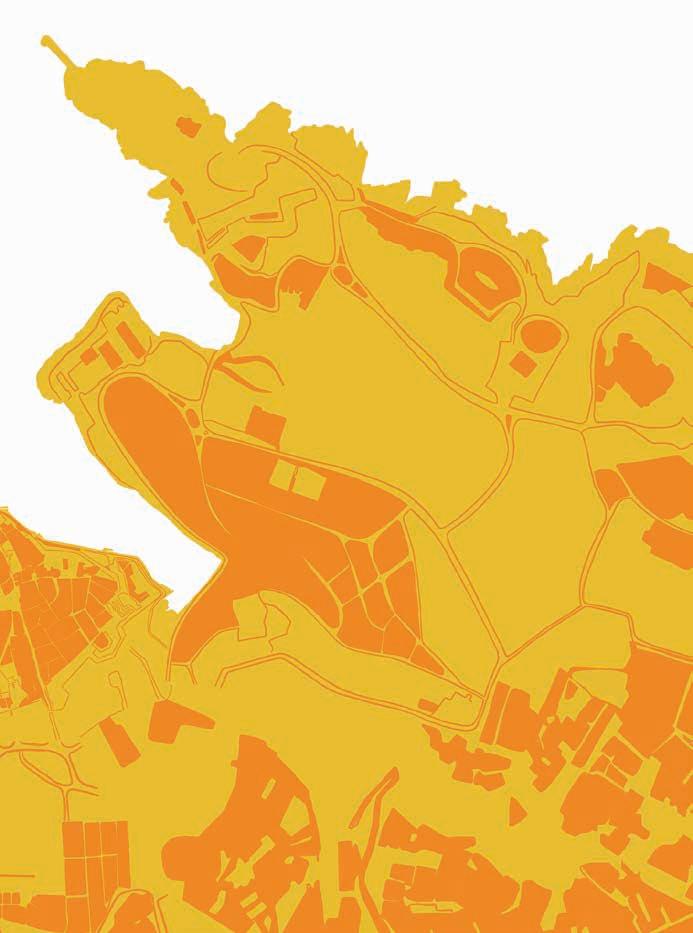
Fort Rinella was built in the Victorian Era to help the British stay in control of the Mediterranean after the Suez Canal opened in 1869. Following the Italian unification, Italy began building a powerful navy. The British responded by constructing four forts— two in Malta and two in Gibraltar—designed to hold massive cannon. Fort Rinella’s giant cannon was installed by 1884, and the fort was finished in 1886. Later, when the cannon was no longer needed, the fort was used to keep watch over Fort Ricasoli.
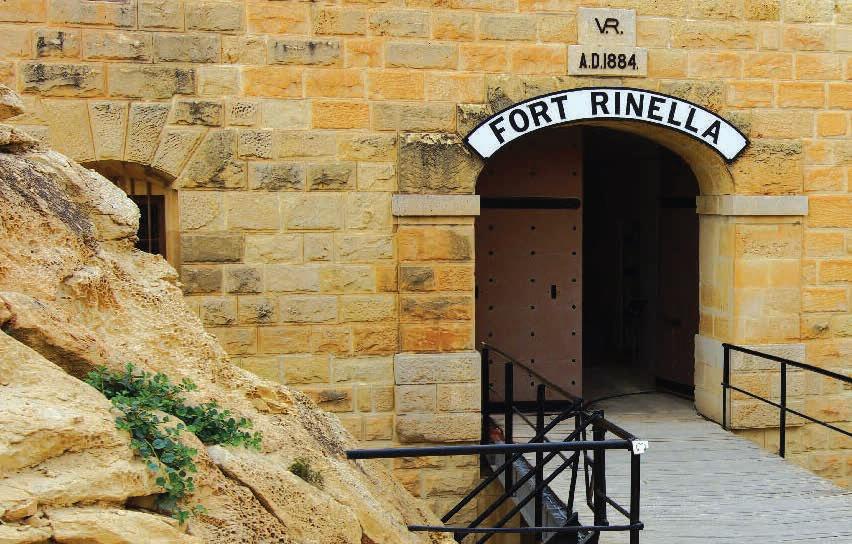

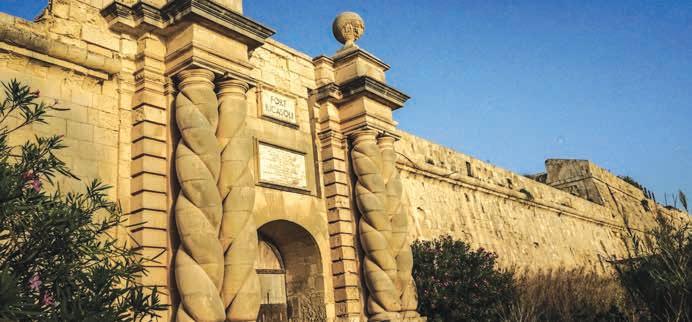

Fort Ricasoli was built by the Knights to help protect the Grand Harbour along with Fort St Elmo. In the 1930s, with war on the horizon, the British armed it with powerful 6-pounder cannon and bright searchlights. When enemy E-boats attacked, these weapons played a key role in stopping the Italian invasion!
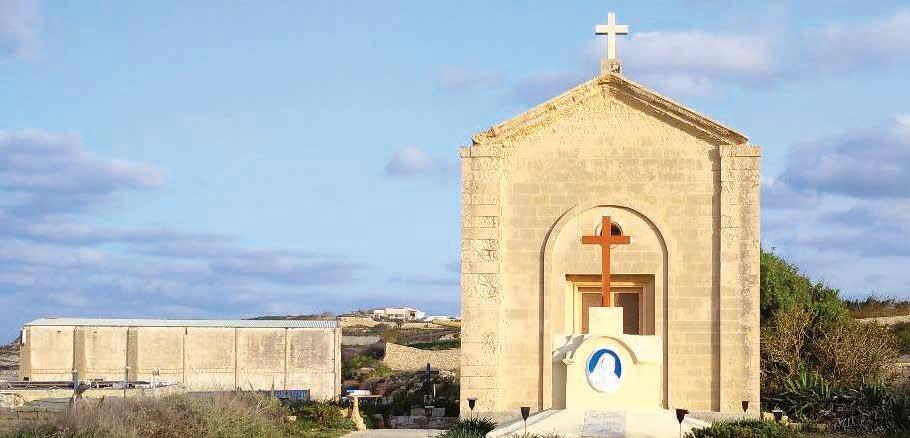
In 1837, a deadly cholera outbreak spread quickly across the Maltese Islands. Many elderly residents of the Ospizio (Home) for The Elderly in Floriana got sick, so authorities moved them to Fort Ricasoli to stop the disease from spreading. Sadly, many didn’t survive, and they were buried together in a mass grave in Wied Għammieq, near the fort.
Learn more about the cemetery here:

Make your way to the entrance of Rinella Battery, where this trail begins.
Find the information board near the entrance and solve these puzzles:
1a. This cannon is heavier than 20 elephants! What is its weight? _____ _____ _____ (Hint: It’s a three-digit number!)
1b. Another fort with a university-themed name was built in Sliema for the same purpose. What is its name? ________________
2
Keep walking down the road on the left of Fort Rinella until you find yourself in front of the rear gates of Fort Ricasoli.
2. What is the frontal part of the fort used for today?
i. Tank-cleaning facility
ii. Football ground
iii. Hospital
3
FUN FACT!
FORT RICASOLI STARRED IN MOVIES LIKE GLADIATOR, ASSASSIN’S CREED, AND THE SERIES GAME OF THRONES!
Retrace your steps and walk down the steps to enter Wied Għammieq Cemetery on your left.
3. Look at the monument with a cross:
3a. In which year was it erected? ____________
3b. Whose image is beneath the cross? _______________
A Maltese proverb states “Il-baħar żaqqu ratba u rasu iebsa”, literally translated as ‘The sea has a soft belly but is very stubborn’, meaning that the sea can be very dangerous. This can be confirmed by the headstones that are placed exactly next to the entrance of the Wied Għammieq Cemetery.
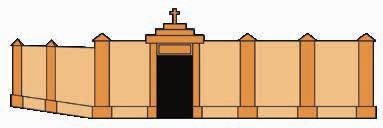
After the telegraph was invented, the British decided to build a telegraph station in Malta, choosing a spot in Kalkara, called Rinella Valley. In 1910, the first station, named ‘The Malta High Power Wireless Station,’ was set up. In 1926, they built tall poles, known as the Poles of Rinella, which were over 180 metres high. One was called the Northwest pole, and the other the Southwest pole. Over time, the station was updated, and the poles were replaced. The station eventually closed, but parts of the poles can still be seen today.
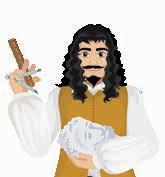
PEOPLE IN KOTTONERA JOKE: “QISEK L-ARBLU TAR-RINELLA”—YOU’RE AS TALL AS A RINELLA POLE!
Beyond Triq ir-Rinella, near the roundabout, there is a road named Triq il-Missjoni Taljana. Its name commemorates the Missione Technico Militare Taliana that came to Malta in the 1970s and contributed to a lot of work on the Island.
4b. When did their tragedy happen? 4 TALL
Exit the Cemetery and find the plaques on the wall on your left.

4a. What were the names of the Agius brothers? ____________ ___________
Now go back up the steps and walk up the slight slope on your right. Follow the road as it curves to the right and descends to Rinella Bay. When you are at the bottom, look up! 5
5. What is there under one of the poles?
Measure your height compared to the pole (with a fun pose)!
6b. In which year was the street inaugurated? ____________________ 6
Now, keep on walking alongside the bay and make your way up the steep slope on your left and past the row of terraced houses until you find yourself in front of a commemorative tablet.
6a. Write down the name of the Italian General who inaugurated it.
One of the monuments is a bust of Lorenzo Gonzi, who moved to live with his family in Kalkara. Maestro Lorenzo Gonzi was bandmaster and director of the Maria Mater Gratiae Band of Żabbar, and of the Maria Annunzjata Band of Tarxien.
ON YOUR LEFT, THERE IS A ROAD NAMED TRIQ IS-SIBI. SIBI MEANS PIRACY OR CORSAIRING IN MALTESE. THE CORSO WAS ONE OF THE MAIN FORMS OF INCOME FOR THE KNIGHTS OF ST JOHN AND THE NOBILITY OF MALTA.
Pretend you’re a pirate and take a photo striking your best captain pose!
At the end of the 19th century, more people were living in Kalkara, and the small Church of our Saviour wasn’t big enough anymore. So, on 23 August 1884, Bishop Carmelo Scicluna approved the building of a new, larger church. A businessman named Fortunato Gulia gave the land, and the architect Guliermo Attard designed the Church.
The first stone was placed on 22 June 1890 by Bishop Scicluna, and the church was finished a few years later. On 10 December 1897, Archbishop Pietru Pace made Kalkara its own parish, dedicated to St Joseph, separate from the parish of St Lawrence of Birgu.
There is an inscription in Latin on this door which states that the place was a cemetery of the Jews that opened in 1784. Its size is about nine by 12 metres.

THIS CEMETERY WAS BUILT USING A FUND FROM LIVORNO, FOLLOWING A REQUEST BY AGOSTINO FORMOSA DE FREMEAUX TO PROVIDE A PROPER BURIAL FOR FREED JEWISH SLAVES.
7b. What year did Gonzi die? ________________ 7
Walk down Triq ir-Rinella, which leads to Kalkara Creek, until you encounter Circolo San Giuseppe Filarmonika Sagra Familja Club on your left. In front of it, to your right, you will find a small square with some monuments and benches.
7a. Maestro Lorenzo Gonzi was born in the town you can see across the creek. Write down its name. _______________
8
Halfway through Triq ir-Rinella, corner with Triq San Mikiel, there is a plaque that marks the place where the old Parish Church of Kalkara stood before the war.

8a. Why was the old Church destroyed? __________________
8b. Write down the date of its destruction ______________
9
Continue walking down Triq ir-Rinella. Exactly at the end of the street, on your left, there is a brown door.
9. How many graves are there in this cemetery?
The Parish Centre doors are decorated with the coat of arms of the locality.
FUN FACT!
KALKARA GETS ITS NAME FROM THE LATIN WORD CALCE, MEANING LIME (IN MALTESE GIR), BECAUSE OF ITS ANCIENT LIME KILNS. HENCE THE MOTTO: A CALCE NOMEN.
Design your own coat of arms for Kalkara!
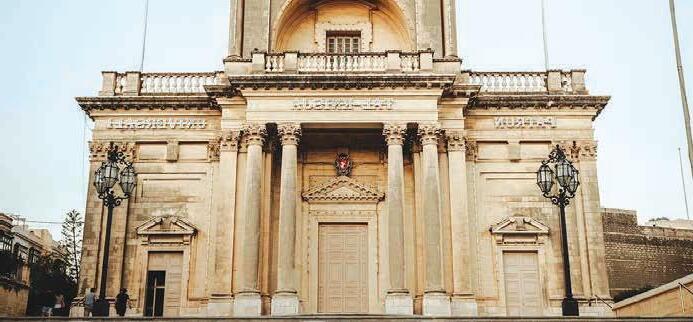

After the Second World War, the people of Kalkara wanted their new Church in a central spot. So, Archbishop Mikiel Gonzi bought a large piece of land near the shore and gave it to the Parish. The Church design was created by Knight Vincenzo Bonello and architect Ġużè D’Amato. In October 1946, Archbishop Gonzi blessed the first stone of the new Church.
Learn more about the Parish Church of Kalkara here
We will not be walking to St Barbara’s Church (also known as Santa Liberata) as it is quite far away. However, if you would like to learn more, scan this QR Code:
FUN FACT!
FRIARIES FROM THIS ORDER WERE ALWAYS BUILT OUTSIDE CITY WALLS TO HELP FRIARS AVOID TEMPTATION AND LIVE A PEACEFUL LIFE. THEY SUPPORTED THEMSELVES THROUGH DONATIONS AND BY WORKING IN THE FIELDS


Describe what you think their daily routine might have been like!
Turn right. On the corner, you will find the Parish Centre.
10a. Write down two symbols that are in the coat of arms of Kalkara.
10b. Why do you think these symbols are used to represent Kalkara?
Near the Parish Centre, you’ll find the Parish Church of Kalkara.
11a. Which saint is the church dedicated to?
11b. How many doors are there on the façade of the Parish Church?

FUN FACT!
THE OLD MALTESE WORD FOR A CEMETERY WAS ZUNTIER (CHURCH PARVIS) BECAUSE, IN THE PAST, PEOPLE WERE BURIED IN FRONT OF THE CHURCH.
When facing the church, walk to the first street on your right. Stop there.
12a. This street, which leads to St Barbara Church, is named after a Mendicant Order whose Friary lies next to the Church. What is the name of this Order?
12b. What colour are the robes worn by Capuchin Friars? ________________
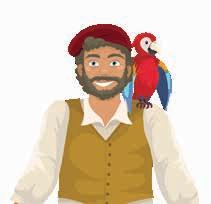
THE BOLLARD WAS INITIALLY POSITIONED AT THE WATER’S EDGE BEFORE THE ROAD BY THE CREEK WAS RECLAIMED FROM THE SEA.
Bradford was a writer, a historian, and a Lieutenant in the British Navy. The plaque was placed here because this is the house where he resided when he lived in Malta.
Invent a book title inspired by this walk!

Villa Portelli was built at the start of the 19th century by Sir Agostino Portelli, who founded the Malta Chamber of Commerce. During the Second World War, it was home to the Flag Officer. Later, in 1961, it became the official residence of Admiral Sir Douglas Eric Holland-Martin, replacing his old home in Valletta. The Villa, which Heritage Malta now manages, has large gardens, some of which are open to the public.
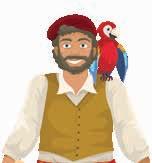
VILLA PORTELLI WAS CONCEIVED AS A PEACEFUL GETAWAY FROM THE BUSY LIFE AROUND THE GRAND HARBOUR. THE ITALIANATE GARDENS FEATURED SYMMETRICAL PATHS, LUSH CITRUS TREES, FLOWERING TERRACES, NEOCLASSICAL STATUES, AND URNS. AT ITS PEAK, THE VILLA HAD OVER 250 TREES!
Now turn around and cross over to Triq il-Marina. Walk past the cafés. On the pavement, you will come across an upcycled cylindrical iron object.
13a. What was the object originally used as? _______________________
13b. Why do you think it was stuck into the pavement?
Keep walking along Triq il-Marina until you come to a marble plaque dedicated to the memory of Ernle Bradford.
14a. When did he live in this house?
14b. How many books did he write during his stay in Malta?
The next street sign you will pass features the name of an important Knight. We’ll be mentioning him soon. Walk up the hill until you come to an imposing collonaded Villa.
15. When did the Maltese Government take over the Villa?
Situated 25 metres above sea level, the Bighi Cot lift was built in the Victorian architectural style in 1903. A modern version has replaced it to enable easy access for visitors who wish to visit the science centre, Esplora.
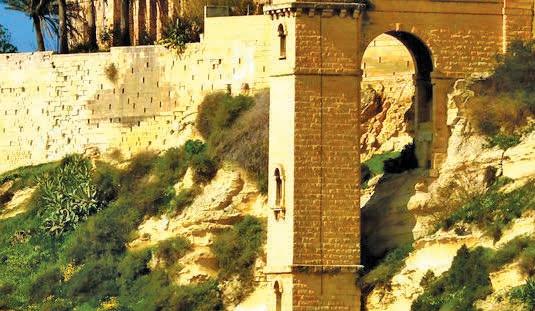


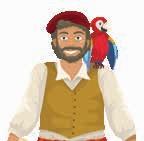
THE COT LIFT WAS THE SECOND ELECTRIC ELEVATOR BUILT ON THE MALTESE ISLANDS. IT WAS DAMAGED DURING THE SECOND WORLD WAR BUT WAS REOPENED IN 1956 BY LADY GRANTHAM. TODAY, IT HOSTS AN EXHIBITION ABOUT THE HISTORY OF VILLA BIGHI.
THE BATHS WERE FILLED WITH COLD OR WARM SEAWATER, HEATED IN THE PUMPING ROOM AFTER BEING DRAWN FROM THE SEA. SEAWATER, RICH IN MINERALS LIKE MAGNESIUM, ZINC, IRON, AND POTASSIUM, CAN HELP REDUCE INFLAMMATION AND PROTECT THE SKIN.
The thermal baths in Bighi Bay were built in 1873 to help British sailors with joint and muscle pain. The hospital used seawater hydrotherapy to treat conditions like arthritis and help wounded soldiers recover. Each bath had a special purpose and was used by different groups of servicemen.
At the top of the street, you’ll find the Church of Our Saviour, built in the 17th century by architect Lorenzo Gafà. The Church is hexagonal, with six sides and domeshaped like a bowl with six segments. The front has a door and a niche, which once held a stone statue of Our Lady of the Snow holding Baby Jesus. The statue is now kept inside to protect it from the weather. The Church also has a small bell cot and two windows.
Learn more about the Church of Our Saviour here:

Now, cross the road and walk down the slope. Keep walking along the water’s edge past the restaurants until you come to a lift on a jetty.
16. This lift was once called the Bighi Cot Lift. Why was the lift originally built? Circle the correct answer:
i. To transfer newborn babies up to the hospital above
ii. To transfer maritime equipment up to the centre above
iii. To transfer injured sailors from naval ships up to the hospital wards
iv. To transfer food up to the canteen above

If you were to keep on walking along the coast on the rocky promontory beneath Esplora, you would come across the remains of six thermal baths. Be careful, as the path here can be slippery, and avoid this part of the tour in bad weather.
17. How many baths remain intact today? _______
Retrace your steps until you come to a narrow passageway with steps on your left leading up to the road above. Cross the road and walk up Triq Maestro Lorenzo Gonzi.
Remember that Knight we mentioned earlier? He is buried in this Church.
18a. What caused Fra Giovanni Bichi’s death? ______________
18b. When was the altar painting by Mattia Preti stolen? ________________
Imagine you’re an architect—what would you add to make the Villa grander?
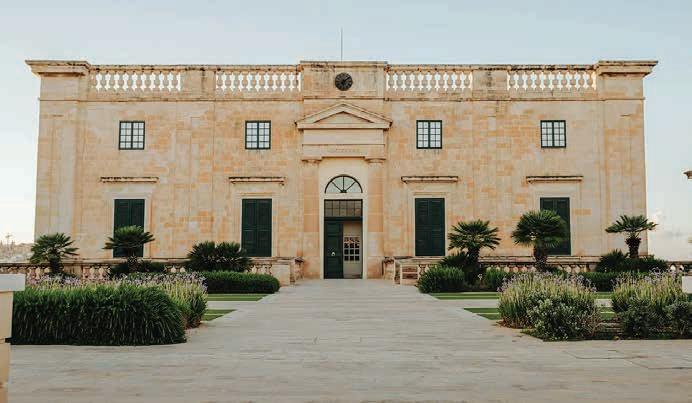
In the middle of this complex, there is Villa Bighi. Built in the 17th century by architect Lorenzo Gafà, it later became a Royal Navy Hospital and wings were added on either side. This hospital also hosted patients from the Crimean War and both World Wars. The hospital closed in 1970 and was later used as a trade school. Today, Villa Bighi is home to the Maltese Council for Science and Technology (MCST).
Esplora, an interactive and fun science museum, was officially opened on 28 October 2016. This project, partially funded by the EU, was the first of its kind in Malta and was conducted by the MCST.
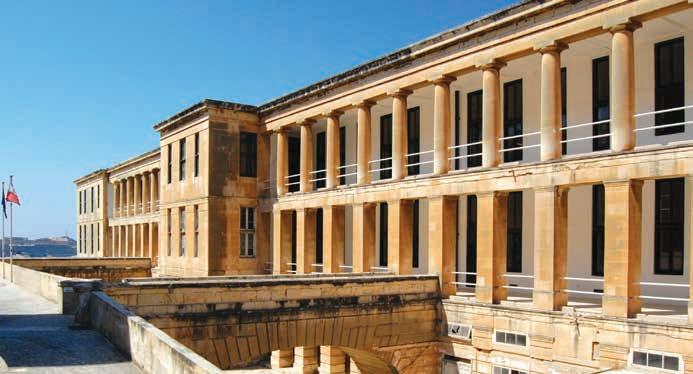
Draw the agency’s logo.

As guardians of over 8,000 years of history, Heritage Malta is the national agency for museums, conservation practice and cultural heritage.
Heritage is what defines us. It is the stories we tell, the food we share, the places we roam and the things that make our hearts beat.
Learn more about Heritage Malta here
Retrace your steps to Triq Marina. Further up the road, you’ll see a building with columns.
19. Which entity is NOT part of the ex-Royal Navy Hospital? Circle the correct answer:
i. Kalkara Local Council
ii. Esplora
iii. Heritage Malta Conservation Laboratories
iv. Bighi Cot Lift

FRA GIOVANNI BICHI WAS A KNIGHT IN THE ORDER OF ST JOHN AND AN ADMIRAL. HE WAS THE NEPHEW OF FABIO CHIGI WHO LATER BECAME POPE ALEXANDER VII. IN 1675, HE STARTED BUILDING VILLA BIGHI, BUT HE DIED A YEAR LATER, SO THE WORK WAS PASSED ONTO HIS NEPHEW MARIO BICHI.
20. What time period did the European Regional Development Fund (ERDF) cover for the completion of the first phase of this project? 20
Find the information panel!
So, you’ve made it to the finish line! Walk to the end of the street. On the corner next to Esplora and the MCST offices, you will find the Head Office and conservation laboratories of Heritage Malta.
21. What is the current motto of Heritage Malta?
i. Our stories, Our Past
ii. Ensuring a future to our past
iii. Part of us 21
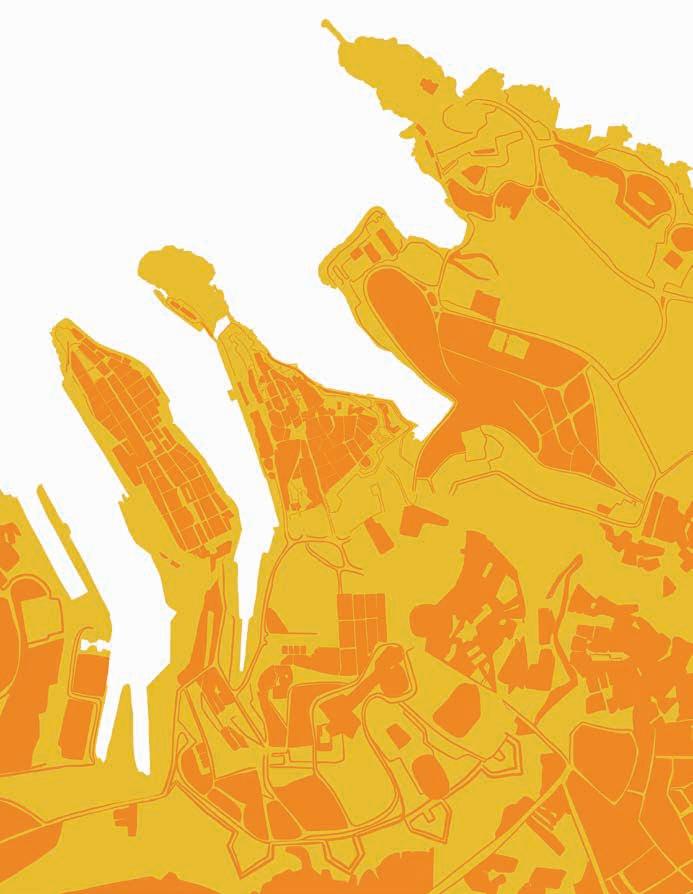

Experience Kottonera—Malta’s historic maritime heart—through four engaging heritage trails, perfect for all ages, whether as a fun family outing or a solo adventure. For centuries, the fortified towns of Isla, Bormla, Birgu, and Kalkara have stood strong, shaped by Knights, sailors, and shipbuilders who met many cultures in these bustling creeks.
Step into history with the Isla Trail (1), where mighty ramparts, maritime legends, and a miraculous statue tell the story of the undefeated city. Continue to Bormla (2), winding through medieval alleyways, windmills, and churches that have survived wars and reinvention. Walk through Birgu (3), the Knights’ first stronghold, exploring grand palaces, hidden gates, and sites of heroic defiance during the Great Siege of 1565. End with the Kalkara Trail (4), a scenic route past sentinel forts, historic cemeteries, and film-set locations in this charming coastal village.
Follow the Tales of Kottonera characters, uncover clues, scan QR codes, crack fun challenges, and unlock the secrets of these exciting neighbourhoods.
History, adventure, and discovery await—are you ready to explore?





Stroll into this pretty seaside village’s past to uncover the hidden gems of Kalkara. This adventurous heritage trail takes you on a journey through 21 exciting stops past sentinel forts, forgotten cemeteries, Hollywood film sets and repurposed villas. Follow the Tales of Kottonera characters as they spill the beans on Kalkara’s characters, crack fun challenges, and scan QR codes to uncover why admirals, knights and injured sailors called this fishing community home.
Kalkara’s fiery history is full of surprises. You can cool off at Rinella Bay. Let’s go!
